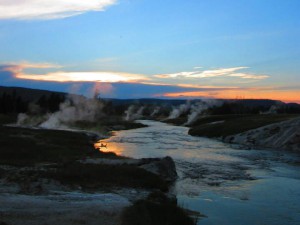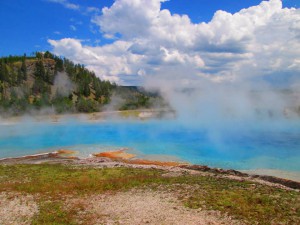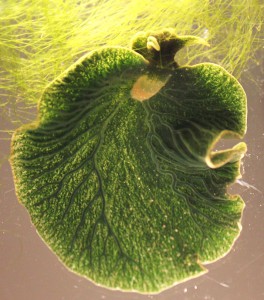Yesterday my fellow blogger, Kari, posted a review of the ACS Chemical Biology paper describing a new BRET platform for analyzing protein-protein interactions. If you are interested in studying induction and inhibition of protein interactions in real time, take a look at the infographic below to learn how to develop a NanoBRET™ Assay to monitor your protein of interest.
Author: Kelly Grooms
Characterizing Immune-Modulating Antibodies Using Bioluminescence
Immune checkpoint pathways such as PD-1/PD-L1 and CTLA-4 are promising new immunotherapy targets for the treatment of cancer and autoimmunity. Immune checkpoint reporter-based bioassays provide a simple, consistent, and reliable cell-based assay to measure Ab function throughout the drug development pipeline.
The brief chalk talk below describes the assay principals of the reporter-based bioassay that monitors the functional blockade of PD-1/PD-L1 interactions.
Thankful it is Friday
Haven’t we all had that day where everything that could go wrong did go wrong? Hopefully today was not one of those days, but if it was, I hope this cartoon helps.
And if we can help with one of those things that didn’t go quite right, remember our Technical Services Scientist are here to help. You can find out how to reach them on our website.
If you need some more laughter, you can find more cartoons here.
Happy Friday!
The Volcano Beneath our Feet
This summer my family and I vacationed on one of the world’s largest active volcanoes. We weren’t alone. Every year over three million people visit this super volcano.
Yellowstone National Park covers almost 3,500 square miles in the northwest corner of Wyoming (3% of the park is in Montana and 1% in Idaho). The park is famous for its hydrothermal features, including the Old Faithful Geyser and vivid hot springs such as the Grand Prismatic Spring.
The park’s hydrothermal system is the visible expression of the immense Yellowstone volcano; they would not exist without the underlying partially molten magma body that releases tremendous heat. National Park Service website
These features are all visible reminders of the immense volcano that exists beneath the surface. Recently, a team of seismologists discovered a reservoir of partly molten rock 12–28 miles beneath Yellowstone National Park. This video from Science 360 describes the discovery and why scientists are interested in it. It is important to note that this discovery does not mean that there is new activity or that the volcano under the park is closer to erupting. It does mean that scientist now have a better picture of the underground “plumbing”.
Getting the Most DNA from Your Plasmid Prep
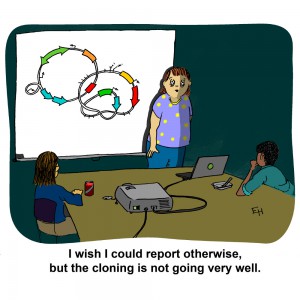 Plasmid DNA preparation is one of the fundamental techniques of molecular biology research. It goes without saying that you want to maximize your plasmid DNA yield as much as possible. Below are a few tips to help you get the most out of every Plasmid prep.
Plasmid DNA preparation is one of the fundamental techniques of molecular biology research. It goes without saying that you want to maximize your plasmid DNA yield as much as possible. Below are a few tips to help you get the most out of every Plasmid prep.
Increase Your Culture Volume
Most plasmid prep systems can process a range of volumes. For example, the PureYield™ Miniprep System can process 600μl to 3 ml of culture. Note: Exceeding the recommended culture volume can result in decreased yields because the increased biomass can lead to insufficient lysis and lysate clearing problems.
Use Optimized Culture Conditions
Media: We recommend growing cells in 1X Luria-Bertani (LB) medium. The use of rich medium, such as 2X YT, CircleGROW®, Terrific broth, or LB-Miller medium, which contains more NaCl, can significantly increase yields, provided that the biomass is within the acceptable range.
Culture incubation times: Low-density bacterial cultures yield relatively low amounts of DNA. Overgrown cultures produce suboptimal yields and excessive chromosomal DNA contamination. Do not use cultures grown longer than 18–20 hours. Continue reading “Getting the Most DNA from Your Plasmid Prep”
A Warm Body in the Mesopelagic: The Endothermic Moonfish
If you think back to biology class, you most likely learned that endothermy, or the ability to maintain a body favorable body temperature (i.e., different than the ambient temperature), was a unique characteristic of mammals and birds. This ability sets “warm blooded” animals apart from “cold blooded” ectotherms such as reptiles and fish.
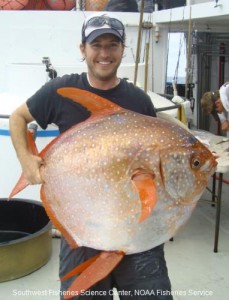
For fish, one of the biggest challenges to maintaining an elevated body temperature is convective heat loss in the gill lamellae. There are a few fish species that are able to retain some of the heat generated internally, but these “regional endotherms” are only able to increase the temperature of specific areas or tissues. Regional endotherms limit the heat loss with retia mirabilia, which are a complex network of blood vessels that act as counter-current heat exchangers that warm the cold arterial blood as it returns from the gills. However, these retia have only been found associated with specific muscle groups and organs, and as a result the rest of the fish’s body remains at ambient temperature.
A silver and crimson-colored, tire-sized, fish called the opah (Lampris guttatus), or moonfish, is changing what scientist thought they knew about endothermy in fish (1). The opah lives in the cold, dim waters of the ocean’s mesopelagic zone hundreds of feet below the surface. Unlike other fish at these depths, the opah is a fast swimming, agile predator. Its secret is retia located inside the gills. The location of the retia means that the opah can maintain an elevated body temperature throughout its body, and a warmer body temperature means it can swim faster and react more quickly than both its prey and other predators.
I don’t think that we should throw out all our biology text books and start rewriting descriptions of what defines a fish, but the discovery of the warm blooded opah should remind us that what we know is just a small drop compared to what remains to be discovered.
Reference
- Wenger, N. et al. (2015) Whole-body endothermy in a mesopelagic fish, the opah, Lampris guttatus. Science 348, 786–9.
Animal or Plant? FISH Labeling Reveals Horizontal Transfer of Algae Gene into Sea Slug Chromosome
There are times when I ask myself why I chose a career in science. This happens on what I call “grass is greener” days. On these days I dream of other careers—like National Geographic reporter or Caribbean tour guide–which all sound way more exciting than scientist. Admittedly these alternative careers are not ones that many people have the privilege of attaining, but sometimes reality gets to take a vacation. Fortunately, science is a fast-moving, always-changing field. As much as I might occasionally dream of exotic jobs in far away locations, science always pulls me back in with something new and unexpected. Because as much as we’d like to think we know, the truth is there is so much more that we don’t.
A case in point—sea slugs. These unfortunately named, exotic looking creatures have some surprising secrets.
Continue reading “Animal or Plant? FISH Labeling Reveals Horizontal Transfer of Algae Gene into Sea Slug Chromosome”DNA Purification from Plants: Not All Methods are Equal
 Isolating DNA from plant tissues is difficult for many reasons. Unlike animal cells, plant cells have rigid cell walls, often made of tough fibrous material, and contain proteins and enzymes and other compounds such as polysaccharides and polyphenols that play a role in different cellular processes. These compounds can interfere with DNA isolation as well as downstream applications such as PCR. For these reasons, DNA isolation methods that are used successfully for other sample types may not work well to isolate DNA from plant material. Continue reading “DNA Purification from Plants: Not All Methods are Equal”
Isolating DNA from plant tissues is difficult for many reasons. Unlike animal cells, plant cells have rigid cell walls, often made of tough fibrous material, and contain proteins and enzymes and other compounds such as polysaccharides and polyphenols that play a role in different cellular processes. These compounds can interfere with DNA isolation as well as downstream applications such as PCR. For these reasons, DNA isolation methods that are used successfully for other sample types may not work well to isolate DNA from plant material. Continue reading “DNA Purification from Plants: Not All Methods are Equal”
PCR Cloning: Answers to Some Frequently Asked Questions
 Q: What is the easiest way to clone PCR Products?
Q: What is the easiest way to clone PCR Products?
A: The simplest way to clone PCR Products is to amplify the product using thermostable polymerases such as Taq, Tfl or Tth polymerase. These polymerases add a single deoxyadenosine to the 3´-end of the amplified products (3´-end overhang), and can be cloned directly into a linearized T-vector.
Q: What if my DNA polymerase has 3´ to 5´ exonuclease activity (i.e., proofreading activity) that removes the 3´-end overhang?
A: To clone PCR products that have been amplified with a polymerase that have proof reading activity into a T-vector, you will need to perform an A-tailing step using Taq DNA polymerase and dATP. Blunt ended restriction digest fragments can also be A-tailed using this method. The method below uses GoTaq Flexi DNA Polymerase (comes with a Mg-free reaction buffer), but any Taq DNA polymerase can be used.
Set up the following reaction in a thin-walled PCR tube:
1–4µl purified blunt-ended DNA fragment (from PCR or restriction enzyme digestion)
2µl of 5X GoTaq Reaction Buffer (Colorless or Green)
2µl of 1mM dATP (0.2mM final concentration)
1µl GoTaq Flexi DNA Polymerase (5u/µl)
0.6µl of 25mM MgCl2 (1.5mM final concentration)
Nuclease-free water to a final volume of 10µl
Incubate at 70°C for 15–30 minutes in a water bath or thermal cycler.
Q: What is a T-vector, and why are they used for cloning PCR products?
A: T vectors are linearized plasmids that have been treated to add T overhangs to match the A overhangs of the PCR product. PCR fragments that contain an A overhang can be directly ligated to these T-tailed plasmid vectors with no need for further enzymatic treatment other than the action of T4 DNA ligase.
For a complete PCR Cloning protocol, Visit the Cloning Chapter of the Promega Protocols and Applications Guide.
Death in the Stars: A Virus Decimates Sea Star Populations Along the Pacific Coast
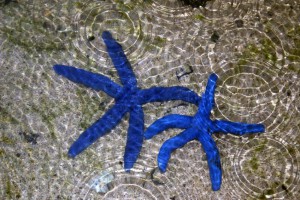 A killer is lurking in the waters off the pacific coast. Silent and lethal, it leaves its decimated victims in tidal pools. They first began to appear in the early summer of 2013. Limp and curled, missing some or all of their limbs, the bodies were little more than globs of slimy tissue. They were hardly recognizable as what they once were—Sea Stars. Continue reading “Death in the Stars: A Virus Decimates Sea Star Populations Along the Pacific Coast”
A killer is lurking in the waters off the pacific coast. Silent and lethal, it leaves its decimated victims in tidal pools. They first began to appear in the early summer of 2013. Limp and curled, missing some or all of their limbs, the bodies were little more than globs of slimy tissue. They were hardly recognizable as what they once were—Sea Stars. Continue reading “Death in the Stars: A Virus Decimates Sea Star Populations Along the Pacific Coast”


